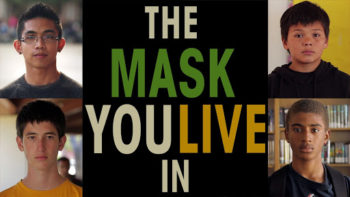An interaction between Rep. Alexandria Ocasio-Cortez and Rep. Ted Yoho last Tuesday proved that good old fashion misogyny in politics is alive and well. After accosting AOC on the Capitol steps, the GOP lawmaker resorted to calling the representative of New York’s 14th congressional district a sexist slur—a word that many women in positions of power are all too familiar with. After their disagreement, Yoho called Rep. AOC a “f*cking b*tch.” To make matters worse, Yoho issued a speech that showed no remorse for his actions and even denied directing his profanity at Ocasio-Cortez. Leaning on the tired idea that knowing women means you respect women, Yoho even went so far as to remind the House that he is the husband to a wife and the father of two daughters. In a response that cleared our skin, watered our plants, and added to our bank account, AOC said what was exactly on our minds, and then some. “This issue is not about one incident. It is cultural. It is a culture of lack of impunity, of accepting of violence and violent language against women, and an entire structure of power that supports that.”
We’ve seen a record number of women run for president this election cycle; more women are filing paperwork to run for congressional office than in any previous election; and a major presidential candidate is announcing a woman as his running mate any day now—the third woman to be nominated among the hundreds of men nominated and 45 elected as veep. Women are making strides in politics—but we can’t expect them to get very far until we change the culture of sexism that Ocasio-Cortez implicates in holding us back in more ways than one. As women continue to claim space in politics, it’s important that we challenge the explicit and implicit biases they face from the media, fellow politicians, and society at large. As the 2020 election cycle heats up, here are a few examples of past sexism against women who sought an executive office that are on our radar during the final months of the campaign.
Stereotypes
Example #1: After ending her run for president, Kamala Harris opened up about the racism and sexism she experienced at the hands of the media. While speaking at her alma mater Howard University, a reporter tweeted, “Did not expect to hear screeches here” after hearing the call of Harris’s Black sorority. Harris later said, “The point is there was a journalist who was covering the presidential race who was unfamiliar with the Divine Nine and the history of black sororities and fraternities in America, which is a deep and profound history.”
Example #2: During both of Hillary Clinton ‘s presidential runs, she faced constant criticism over what some called a “cold” demeanor. In 2008, a surveyor called her “a man among boys.” Clinton was slighted for voters perceptions that women must be feminine and warm.
Example #3: Also during the 2008 presidential primary, magician/comedian Penn Jillette used a joke on his tour that “that Barack Obama did well in February because it was Black History Month and Hillary Clinton did well in March because it was “White B*tch Month.”
Discounting her qualifications
Example: In the 1984 Vice Presidential Debate, then VP George H.W. Bush took a patronizing tone with Democratic VP nominee Congresswoman Geraldine Ferraro, the first woman nominated as VP on a major ticket. Congresswoman Ferraro called him out, citing her substantial qualifications on foreign policy. By contrast, when Bush ran for President four years later, he named Dan Quayle as his VP—who the media found lacking in qualifications. Yet the critique had no effect on the outcome of the election with Bush/Quayle winning in 1988.
Focusing on things unrelated to the job (appearance, “shrill” voice, etc.)
Example #1: The media, in part fueled by social media, went full throttle sexist when covering Sarah Palin’s looks, her wardrobe, and her parenting—something almost no male Vice Presidential nominee has historically been subject to.
Example #2: In 2007, during a Democratic presidential primary debate, candidates were asked to name something that they liked and disliked about the candidate standing next to them. When John Edwards was called on to remark on Hillary Clinton—wearing a pink jacket amidst a sea of dark blazers—he said that he “wasn’t sure about that coat.”
Examples #3 – 11: If you need to get your blood pressure up, just peruse this roundup of all the men (and two women) who called HIllary Clinton’s voice “shrill.” Featured sexists include Geraldo Rivera, Sean Hannity, Bob Woodward, Michael Steele, and others.
Example #12: Again directed against Hillary Clinton you might have missed Cleavagegate, when, in 2007, The Washington Post wrote an article about the Senator’s neckline under a boxy pink blazer as she gave a speech on the Senate floor. The article used words like “provocation” and “sexualization” when describing the Senator’s professional clothing—descriptors never used when covering the clothing choices of men.
Attributing her success to a man
Example: When Hillary Clinton ran for President in 2008, then-MSNBC host Chris Matthews said on his show “Let’s not forget — and I’ll be brutal — the reason she’s a U.S. senator, the reason she’s a candidate for president, the reason she may be a front-runner is her husband messed around. That’s how she got to be senator from New York. We keep forgetting it. She didn’t win there on her merit.” Matthews later apologized for the remark. But early this year, Matthews showed that he believes men when he went on the attack against 2020 candidate Elizabeth Warren pressing her on why she believes multiple accusations of sexual misconduct leveled at candidate Michael Bloomberg over the denial issued by Bloomberg. The incident contributed to Matthews’ subsequent resignation from MSNBC.
Take Action! The media is both the message and the messenger, and sexist coverage can quickly define narratives. Call out sexist media coverage of the women running for office this year with our hashtag #Sexism2020.




